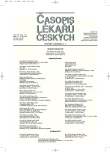Czech model for decrease of maternal mortality in Uganda
Authors:
J. Donát
Authors‘ workplace:
Univerzita Pardubice, Porodnicko-gynekologická klinika Pardubické krajské nemocnice, a. s.
Published in:
Čas. Lék. čes. 2009; 148: 338-341
Category:
Special Articles
Overview
High maternal and perinatal mortality is the leading problem of the health care in developing countries of Sub-Saharan Africa, including Uganda. The main condition for decrease of maternal mortality is availability of an emergency obstetrical care in hospital accompanied by skilled team of specialists (gynaecologist, anaesthesiologist, paediatrician), which are able to treat all obstetrical complications and provide an intensive care to risk newborns. The Czech Hospital and School for midwives in Uganda was founded and build with the aim to accomplish a grant project for the decrease of maternal, perinatal and child mortality. Our project to connect emergency obstetrical care in hospital to villages and traditional delivery attendants by mobile phones shows a simple and original model, which can help to decrease maternal mortality in Uganda and in the other countries of Sub-Saharan Africa as well. The Czech-Uganda Hospital started its work on 19th February 2007 with a team of Slovak doctors; however, till now, after 2 years of work, it doesn’t fulfil its role of a specialised obstetrical department, which would be able to join its partners in villages and start the grant project for decrease of maternal and perinatal mortality.
Key words:
Uganda, maternal and perinatal mortality, model for decrease of maternal mortality, project of the Czech-Uganda Hospital and School for midwives.
Sources
1. Mohtashami H. Maternal mortality can be avoided. The New Vision (Uganda) 2007, May 10.
2. Ministry of Health of Uganda, Health Sector Strategic Plan II 2005/06-2009/2010, Discussion Draft 4 June 2004.
3. World Health Organization, UNICEF, UNFPA. Maternal mortality in 2000. Estimates developed by WHO, UICEF, UNFPA, Geneva: WHO 2004.
4. WHO systematic review of maternal mortality and morbidity: the prevalence of uterine rupture. BJOG: an International Journal of Obsterics and Gynaecology 2005; 112: 1221–1228.
5. Duffy PE, Fried M. Malaria in the pregnant woman. CTMI 2005; 295:169–200.
6. McIntyre J. Preventing mother-to-child transmission of HIV: successes and challenges. Int J Ob G 2005; 112/9: 1196–1203.
7. Pearson L, Shoo R. Availability and use of emergency obstetric services: Kenya, Rwanda, Southern Sudan and Uganda. Int J Ob Gynec 2005; 88/2: 208–215.
8. Gerein Nancy, Green A, Pearson S. The implications of shortages of health professionals for maternal health in Sub-Saharan Africa. Reproductive Health Matters 2006; 14/27: 40–50.
9. Vermund SH. Prevention of mother-to-child transmission of HIV in Africa. Top HIV Med 2005; 12/5: 130–134.
10. Donát J. Uganda, velký příběh malé nemocnice. Praha: Domena 2006; 175 s.
11. Utešená M. 22 schodov k nadeji. Bratislava: Charitativne projekty Vysokej školy zdravotnictva a socialnej práce Svatej Alžbety 2008.
Labels
Addictology Allergology and clinical immunology Angiology Audiology Clinical biochemistry Dermatology & STDs Paediatric gastroenterology Paediatric surgery Paediatric cardiology Paediatric neurology Paediatric ENT Paediatric psychiatry Paediatric rheumatology Diabetology Pharmacy Vascular surgery Pain management Dental HygienistArticle was published in
Journal of Czech Physicians

- Metamizole vs. Tramadol in Postoperative Analgesia
- Metamizole at a Glance and in Practice – Effective Non-Opioid Analgesic for All Ages
- Advances in the Treatment of Myasthenia Gravis on the Horizon
- What Effect Can Be Expected from Limosilactobacillus reuteri in Mucositis and Peri-Implantitis?
- The Importance of Hydration in Wound Healing
Most read in this issue
- Bilateral spontaneous pneumothorax – wrong therapies
- Human genome sequencing – next generation technology or will the routine sequencing of human genome be possible?
- Eosinophils in the gastrointestinal tract
- On human ageing and longevity – 2. internal determinants
